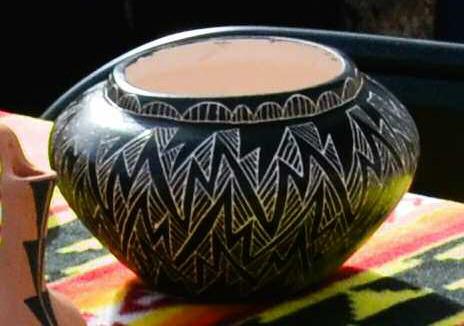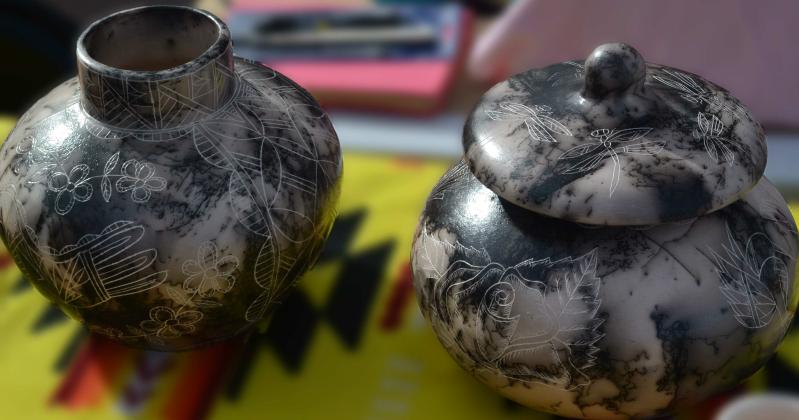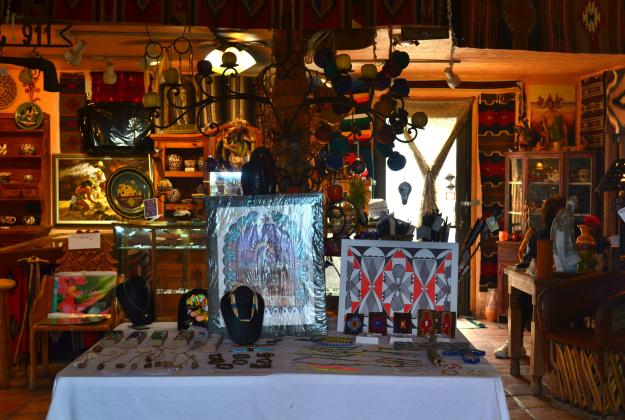Kathryn Marmon, Reporter
The Indian Arts Center in Laguna Pueblo, New Mexico has a mutually beneficial relationship with local artists. Not only do they show their work in their gallery, but they also have an outdoor market on weekends where the artists show their work in person. The center is owned and operated by Dominic Quiroz and his mother Janice, and they only ask $5.00 from the artists as their commission.
Friday, January 19, Shayne Coop and his wife Michelle Estevan of Acoma Pueblo, New Mexico, were responsible for the artistic display of jewelry and pottery. Their pottery designs are a combination of traditional methods and contemporary creative designs. For instance, their seed pots (an enclosed pot on the top with a small hole on top) and ollas (water jars) are made in a variety of sizes, some with horsehair and free-hand etching.
The horsehair method is precise and requires caution, two people usually are required to apply the horsehair. The couple explained that they work together to apply the horsehair once the pottery has been heated in the kiln at 1200 to 1500 degrees Fahrenheit, considered to be a raku, or low fire method. They must successfully apply the horsehair on the first try. Once the pottery begins to cool the horsehair will not stick but will fall off the pottery.
Sometimes it can be difficult to part with a favorite piece. The couple is particularly fond of a lightning bolt design, etched by freehand, and that won 3rd place at the New Mexico State Fair in 2023, and they intend to save the piece for their grandchildren.
Coop and Estevan are traditional artists and in Acoma Pueblo the pottery is done by the women, while the stones are done by the men. Of course, there are many artists who prefer to do the opposite Continued form A1
of tradition.
They also have a selection of elegantly strung authentic stones, shells, and beads. The strung necklaces may look simple, like beads on a thread or wire, but these can actually take hours to construct. In order to avoid a lumpy clumpy look the craftsman takes his time, considering the spacing and balance in order to achieve a flowing and elegant necklace. The traditional Acoma craft is made using all real stones on a 26-pound test wire. This means that if you were to use this wire to catch a 26-pound fish, it would not break. So, this necklace would last a long time, possibly a lifetime.
The couple is often at the Indian Arts center. They accept custom orders for their work which ranges from $10 to $900. Something for everyone.
The Art Center’s regular hours: Monday through Sunday; 9 a.m. to 5 p.m.
Saturday Markets: January 19 through March, Friday & Saturday, 11 a.m. to 5 p.m.
The Indian Art Center can also be seen on Facebook and Google.



